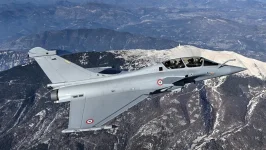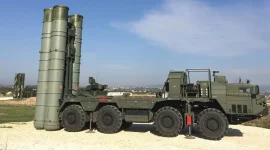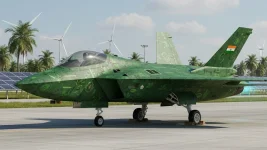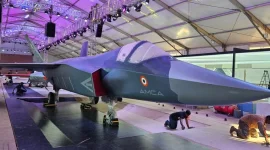India is significantly enhancing its military capabilities by fast-tracking the development of an 800-kilometer-range BrahMos supersonic cruise missile.
This powerful conventional weapon, produced by the BrahMos Aerospace joint venture between India's DRDO and Russia, is undergoing critical tests on a modified ramjet engine.
According to defence sources, the goal is to have this new precision-strike system fully operational and ready for combat by the end of 2027, reinforcing India's strategic posture.
According to a high-level defence official, the primary engineering work on the missile's new ramjet engine is largely complete
The current phase of testing focuses on its advanced navigation system. This hybrid system combines an internal Inertial Navigation System (INS) with external satellite guidance (like GPS or India's own NavIC).
These final tests are essential to confirm the missile's pinpoint accuracy and its ability to resist electronic jamming by adversaries.
The missile's original range was restricted to 290 kilometers. This was to comply with the rules of the Missile Technology Control Regime (MTCR), an international agreement to prevent the spread of long-range missile technology.
After India formally joined the MTCR in 2016, it was no longer bound by this limit, leading to an upgraded 450-500 km variant in 2017.
A key strength of the BrahMos is its versatility, as it can be fired from land-based mobile launchers, naval ships, and Sukhoi-30MKI fighter jets.
This upgrade to 800 kilometers represents more than a simple range extension; it is a major technological overhaul designed to secure India's long-term deterrent capabilities.
The central innovation is the re-engineered ramjet engine. A ramjet is an air-breathing engine that uses the missile's own high speed to compress air for combustion. This design allows it to maintain powerful, sustained thrust over much greater distances while preserving its high speed and agility.
Ensuring the missile's accuracy over this new, longer distance is a primary focus of the current trials.
The hybrid navigation system (INS-GNSS) is critical; the INS provides constant guidance independent of external signals, making it resistant to jamming, while satellite updates correct its path to achieve "sub-meter" (less than one meter) accuracy.
This counters electronic warfare tactics, such as GPS jamming. Recent trials, including a flight in early 2025 that reportedly used a new domestically-developed seeker, have shown promising results.
A key advantage of the new 800-km variant is its design for easy integration into existing platforms.
For the Indian Navy, which already operates the BrahMos on approximately 20 warships, the upgrade is expected to be straightforward. It will primarily involve software and fire-control system updates, allowing the new missile to be operational just months after receiving final approval.
The Indian Army's land-based units will also be upgraded, while the Air Force variant may need a slightly longer timeline for additional flight testing.
This extended-range missile comes at a critical time for India's national security, given the heightened border tensions with China and persistent threats from Pakistan.
A longer-range weapon allows for "standoff operations," where high-value targets can be struck precisely from a safe distance, minimizing risk to pilots and troops.
The BrahMos, with its powerful conventional warhead designed to destroy hardened targets, will work alongside other systems like the tactical Pralay ballistic missile and the 1,000-km range Nirbhay subsonic cruise missile.
Together, these weapons could form the core of a new, proposed Integrated Rocket Force.
Strategic analysts describe the 800-km BrahMos as a significant development. It provides India the ability to threaten key military assets deep inside enemy territory without crossing borders, acting as a powerful deterrent.
Because it carries a conventional (non-nuclear) warhead, its use aligns with India's "no-first-use" nuclear policy. This enhancement also boosts the missile's export prospects, building on the existing sale to the Philippines and interest from other nations.







